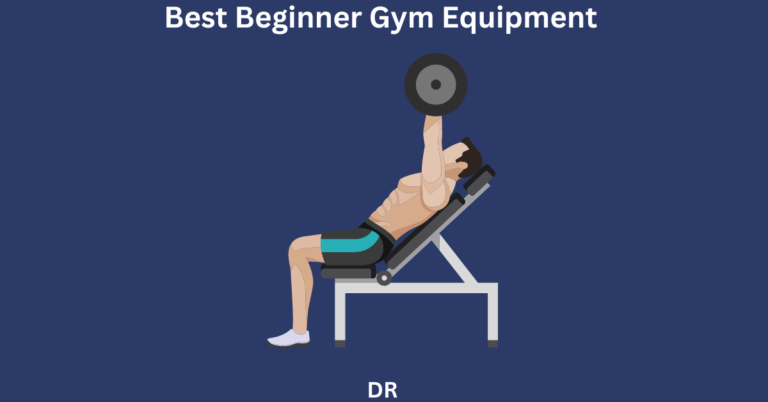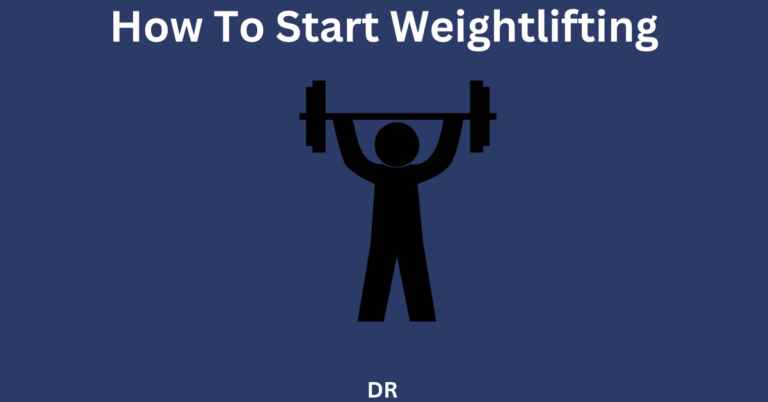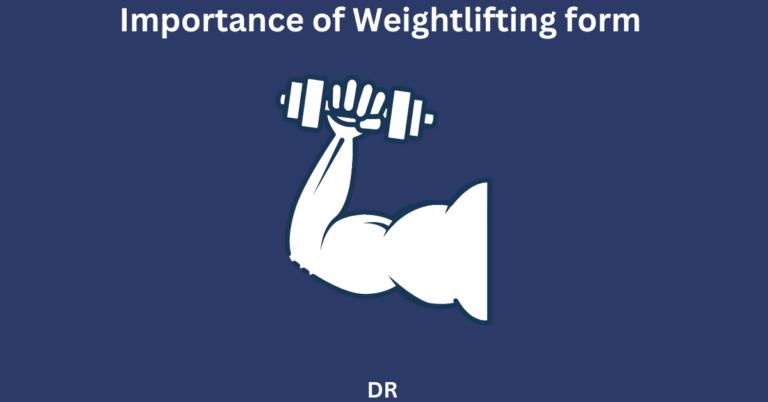8 Common Beginner Weightlifting Mistakes to Avoid in 2024
Let me share the 10 biggest beginner weightlifting mistakes to avoid in 2024. Did you know that 75% of new gym-goers give up within the first three months? The main reason? They make mistakes that stop their fitness progress and make them feel discouraged. This way, you can hit your muscle-building goals.
These mistakes really keep you back, and I really hope you can take these mistakes into account and fix them as soon as possible. I’ve made many of these mistakes in my 5 years of lifting and so have the people I have helped to get in the best shape possible.
Key Takeaways
- Avoid lifting weights that are too heavy, which can lead to poor form and injury.
- Incorporate a proper warm-up and cool-down routine to prepare your muscles and prevent soreness.
- Focus on compound exercises that engage multiple muscle groups for maximum efficiency.
- Gradually increase weight and volume over time rather than making dramatic changes.
- Allow for adequate rest and recovery between workouts to support muscle growth and repair.
The Importance of Proper Form and Technique
In weightlifting, getting your form and technique right is key. It’s more important to focus on how you move than how much you lift. This helps prevent injuries and makes your workouts more effective. Bad form can cause muscle strains, joint pain, and even serious issues like slipped discs.
1) Poor Form and Using Momentum
Many beginners lift weights by using momentum, not just their muscles. This might let you lift more, but it’s not good for your muscles or your safety. Using bad form, like leaning back in a seated dumbbell press, can make you feel like you’re doing great but doesn’t work the muscles right.
To keep your form right, try using a mirror, working with a trainer, or recording yourself. This helps spot and fix any technique problems. It’s better to lift lighter weights with control and focus on contracting your muscles than to risk injury with heavy weights and bad form.
“Cheating during exercises, such as leaning back during a seated dumbbell shoulder press, may lead to reduced tension on the intended muscle group and more load on other muscles.”
Keeping your form correct is key to avoiding injuries and building muscle. It also helps keep your bones strong and you independent as you get older. Learning the right techniques early sets you up for long-term success and a healthier life.
2) Warming Up and Cooling Down

Starting a workout routine is thrilling, but it’s key to focus on injury prevention right from the start. Many beginners overlook the importance of their warm-up and cool-down routines. These steps are vital for keeping your body safe and helping you get the most out of your workouts.
A good warm-up boosts blood flow, greases the joints, and gets your muscles ready for action. This simple step can greatly lower the chance of getting hurt during exercise. The cool-down is just as crucial, easing your body back to a resting state after intense activity. It helps with flexibility and recovery.
- Do a dynamic warm-up to get your body set for the main exercise.
- Use exercises that are similar to what you’ll be doing, like bodyweight squats or arm circles.
- End with some static stretches to keep flexibility and cut down on soreness.
Ignoring these key warm-up and cool-down routines is a big mistake for beginners. It can stop you from reaching your fitness goals and keep you out of the gym for a long time. Make sure to prepare and recover properly to stay safe and effective in your workouts.
Remember, prevention is better than cure. Spending a bit more time on your warm-up and cool-down can lead to fewer injuries, quicker recovery, and better progress towards your fitness goals.
3) Pacing and Time Under Tension
For beginners in weightlifting, lifting too quickly is a common mistake. It might seem like moving fast and with momentum is efficient, but it can actually slow down your progress. The focus should be on the quality of your lifts, not just how many you do.
Studies show that lifting slower and keeping the muscle under tension longer can increase strength and size. A study by LaChance & Hortobagyi found that slower movements in exercises like push-ups and pull-ups led to fewer reps but more time under tension. This is key for muscle growth.
4) Lifting Too Quickly
Many beginners lift weights too fast, using momentum. This might let you lift heavier weights, but it cuts down the time the muscle is under tension. This reduces the benefits. Aim for a 4-6 second tempo on each rep, with a slow descent and a controlled lift.
Slowing down your lifts and focusing on time under tension can greatly improve your technique and results. Research by Wernborn et al. in 2007 found that sets to failure with moderate weights (60-85% of 1RM) led to the best muscle growth. The total time the muscle is active matters a lot.
Adding time under tension to your routine can help you build strength, gain muscle, and avoid common mistakes. It’s not just about lifting heavy weights, but how you do it.
5) Compound vs. Isolation Exercises
For beginners in weightlifting, focusing too much on isolation exercises is a common mistake. These exercises, like bicep curls, might seem easy but don’t fully develop your strength. The real power comes from compound exercises.
Compound exercises, such as squats and bench presses, work many muscles at once. They build strength and improve your overall fitness. Isolation exercises, like leg extensions, only work one muscle, which limits their impact on your body.
| Compound Exercises | Isolation Exercises |
|---|---|
| Engage multiple muscle groups and joints | Target a single muscle group |
| Allow for heavier weights and greater overload potential | Limit the amount of weight that can be lifted |
| Promote whole-body strength and athleticism | Focus on specific muscle development |
| More time-efficient for training multiple muscles | Require more time due to targeting one muscle per movement |
| Challenging to learn but highly beneficial for beginners | Easier to learn but less impactful for overall fitness |
Isolation exercises have their place but compound exercises are key for beginners. They work many muscles at once, making you stronger and more resilient. This approach helps you succeed in lifting techniques over time.
For the best results, mix compound exercises for beginners with isolation exercises. A certified trainer can help you find the right balance for your goals and abilities.
6) beginner weightlifting mistakes
Starting a new fitness journey can be thrilling, but beginners often make mistakes in the gym. It’s key to know the common errors that can stop your progress. These mistakes can also stop you from reaching your strength training goals.
One big mistake is poor form and using momentum instead of muscle strength. This increases injury risk and makes exercises less effective. Always focus on proper weightlifting technique in your routine.
Another error is skipping the warm-up and cool-down. Warming up gets your body ready for the workout. Cooling down helps muscles recover and prevents soreness. Without these steps, you risk injuries and slow progress.
Many beginners lift too quickly, losing control and muscle engagement. Focus on time under tension and pace your lifts. This approach targets the right muscles and builds strength better.
Novices often prefer isolation exercises over compound movements. While isolation exercises are useful, compound exercises work many muscles at once. They are key to building a strong, balanced physique.
- Neglecting recovery and rest days
- Inconsistency in their workout routine
- Lack of goal-setting and tracking progress
- Relying too heavily on body momentum instead of muscle strength
- Improper weight selection, either too light or too heavy
Being aware of these mistakes and using best practices in your weightlifting programme helps. This way, you set yourself up for long-term success and avoid fitness journey setbacks.
7) Weight Selection and Progression
Starting with weightlifting, many beginners pick weights that are too light. This might seem easy, but it can slow down your progress. It stops you from reaching your goals.
Finding the right balance is key. You should challenge your muscles without risking your form or getting hurt. Picking weights that are too light won’t make your muscles grow stronger. But, choosing weights that are too heavy can lead to bad technique and injury.
8) Choosing Weights That Are Too Light
Many beginners lift weights that are too easy. They feel in control but don’t make much progress. Lifting light weights doesn’t make your muscles adapt or get stronger.
To challenge your muscles, you need to increase the weight as you get stronger. This is called progressive overload. It’s important for beginners. By slowly adding more weight, you keep pushing your body to get stronger.
| Weightlifting Progression Milestones | Recommended Approach |
|---|---|
| First 4 Weeks | Increase weight by 5-10% each session |
| Next 4-8 Weeks | Increase weight by 2.5-5% every 1-2 weeks |
| After 3-6 Months | Increase weight by 2.5-5% every 2-4 weeks |
Be patient and stay consistent. Slowly adding more weight will help you progress in beginner weightlifting. You’ll build strength and muscle over time.
“The secret to getting ahead is getting started.” – Mark Twain
Conclusion
Starting your weightlifting journey? Avoid the mistakes we’ve talked about in this article. Focus on lifting right, pace your workouts, and pick the right weights. This will help you succeed and keep you on track with your fitness goals.
Be patient and consistent. With the right approach, you’ll get stronger, build lean muscle, and see the results you want.
Make sure to exercise correctly to avoid injuries. Don’t hesitate to get advice from trainers or fitness resources. Mix weight training with cardio and eat well to make the most of your gym time. Most importantly, stay motivated and enjoy your fitness journey. Your hard work will pay off.
Whether you want to build muscle, get stronger, or boost your health, learning the basics of weightlifting is key. Stay dedicated, pay attention to your form, and enjoy the journey. Your future self will be grateful.





